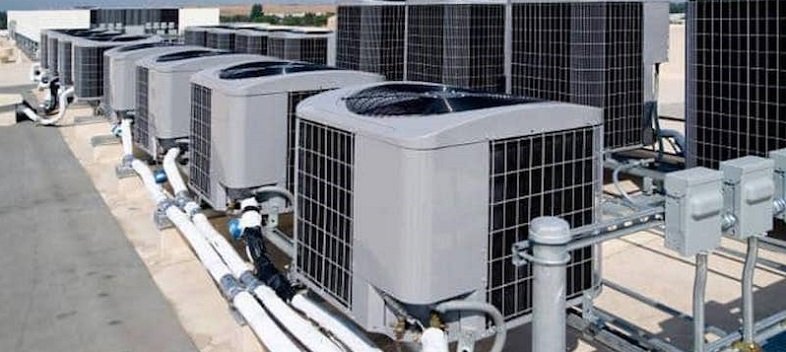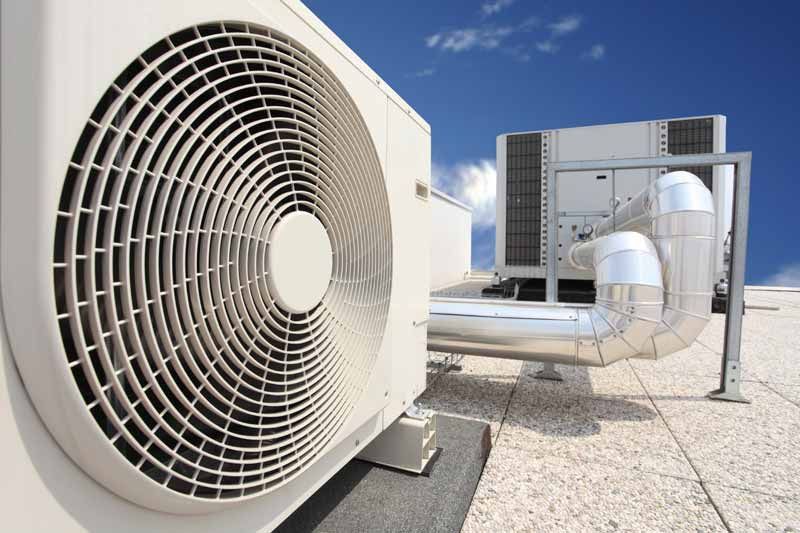Expert Tactics to Improve Indoor Air Quality with ductless mini splits
Expert Tactics to Improve Indoor Air Quality with ductless mini splits
Blog Article
How a Heatpump and Heating System Interact to Enhance Your Home's Heating Performance
Recognizing how a heat pump and heater interact is necessary for homeowners looking for reliable heating options. Each system has its staminas, offering a balanced method to home convenience. The warmth pump succeeds in moderate temperature levels, while the heater supplies fast heat during severe cold. This synergy not just reduces power costs however also boosts the lifespan of both devices. What factors affect this collaboration, and exactly how can property owners optimize their benefits?
Comprehending Warmth Pumps: Exactly How They Function
Although lots of people might be not familiar with their internal operations, heatpump play an essential function in modern-day heater. These tools operate by moving warmth from one location to one more, using the concepts of thermodynamics. In cooler months, a warmth pump essences heat from the outside air, ground, or water, and transfers it indoors to warm the space. On the other hand, throughout warmer months, it can reverse the procedure, serving as an air conditioning system by getting rid of warmth from inside to the outside.Heat pumps contain an evaporator, condenser, development, and compressor shutoff. The cooling agent within the system soaks up warmth as it vaporizes at reduced temperature levels and stress. The compressor after that boosts the pressure and temperature of the refrigerant, enabling it to release heat as it condenses. This efficient process can greatly decrease energy intake contrasted to typical home heating techniques, making heatpump a sustainable choice for climate control in homes.
The Duty of Heaters in Home Home Heating
Heating systems play a necessary function in home heating by supplying a trusted resource of warmth during the cooler months. They run by creating warmth with combustion or electric resistance, dispersing it throughout the home using ducts or radiant systems. The performance of a heating system is usually measured by its Yearly Gas Application Efficiency (AFUE) ranking, which suggests how successfully the system converts gas into heat.Furnaces can make use of various power sources, including gas, oil, electricity, or gas, enabling home owners to select the most ideal alternative for their requirements. Unlike warmth pumps, which may battle in severe cold, heating systems maintain regular efficiency, ensuring that interior temperature levels remain comfy despite outdoor problems. Furthermore, contemporary furnaces frequently come equipped with innovative innovation, such as variable-speed blowers and smart thermostats, improving their efficiency and responsiveness. This convenience makes heating systems an important part in all-inclusive home heating techniques.

Advantages of Making Use Of Both Equipments Together
Incorporating the staminas of both furnaces and heatpump can bring about a much more effective and effective home heating solution. Making use of both systems enables homeowners to benefit from the warm pump's energy performance during milder temperatures while counting on the heating system for even more severe cold conditions. This double method can greatly minimize energy prices, as heat pumps eat less power than standard heating techniques when temperatures are moderate.Additionally, utilizing both systems together can improve comfort degrees in the home. Heat pumps can supply consistent, even home heating, while heating systems can swiftly elevate ambient temperature levels when required. The integration of both systems can extend the life expectancy of devices by lowering wear and tear on each system, as they share the work. Eventually, home owners can delight in a well balanced, affordable home heating option that adjusts flawlessly to varying climate conditions, guaranteeing a cozy and inviting home throughout the cold weather.
Exactly How Warmth Pumps and Furnaces Enhance Each Various Other
They create a complementary heating system that takes full advantage of efficiency and comfort when house owners incorporate warmth pumps and furnaces. Warm pumps run by transferring warm from the outdoors air or ground, making them highly efficient in modest environments. They succeed throughout milder temperature levels, offering cost-efficient home heating. Alternatively, heaters produce warm with burning or electric resistance, delivering strong, instant warmth during extreme cold conditions.The mix of these two systems enables vibrant adjustments based on temperature changes. Throughout warmer months or milder winter days, the heat pump can take the lead, preserving power and lowering prices. As temperature levels decrease, the furnace can seamlessly engage, ensuring regular warmth throughout the home. This synergy not only maximizes power use yet also boosts the life expectancy of both systems, as each unit runs within its optimal efficiency range. With each other, they produce a balanced setting that adapts to differing climate needs.
Enhancing Performance: Tips for Homeowners
House owners can enhance their home heating efficiency via a number of practical approaches. Developing a regular upkeep schedule, incorporating clever thermostat technology, and implementing efficient insulation and securing services are essential actions. These actions not just improve comfort yet likewise minimize power prices.
Routine Upkeep Arrange
To guarantee optimal heating efficiency, establishing a routine upkeep routine is necessary for any home. Property owners should prioritize routine assessments of both heat view it pumps and heating systems to ascertain peak efficiency. This consists of changing air filters each to three months, as clogged up filters can significantly minimize performance. In addition, scheduling expert maintenance at least yearly enables technicians to identify and resolve prospective problems prior to they intensify. Home owners ought to likewise cleanse the heatpump's outdoor device to avoid debris accumulation that can prevent air movement. By sticking to a normal upkeep schedule, property owners not only enhance their heater' efficiency but also extend their lifespan, resulting in greater comfort and reduced energy prices throughout the cooler months.
Smart Thermostat Assimilation
Incorporating a wise thermostat into a home heating system can greatly boost power efficiency, especially as it permits exact control over temperature setups. These gadgets can learn the home owner's routine and preferences, instantly readjusting the temperature to optimize convenience while reducing power use. For example, they can reduce heating throughout times when the home is unoccupied, lowering unnecessary intake. Numerous clever thermostats also offer real-time energy usage information, making it possible for property owners to make informed choices regarding their heating routines. Additionally, remote accessibility through mobile phone apps enables customers to adjust settings from anywhere, making certain the home is warm upon return. On the whole, wise thermostat integration not only boosts comfort however substantially contributes to power financial savings and efficiency.
Insulation and Sealing Solutions
Smart thermostats play an important duty in energy efficiency, however their performance can be greatly improved by correct insulation and securing services. House owners should prioritize protecting attics, floorings, and wall surfaces to minimize heat loss. Premium insulation materials, such as spray foam or fiberglass, can considerably boost thermal resistance. In addition, securing voids around windows, doors, and air ducts avoids chilly air infiltration and heat escape. Weatherstripping and caulking work techniques for attending to these leakages - heat pump replacement ooltewah tn. Normal assessments for air leakages, together with making use of blower door tests, can help recognize trouble locations. By buying insulation and sealing, homeowners can maximize the efficiency of their furnace, eventually causing decreased energy intake and reduced utility bills
Usual Misconceptions Regarding Warm Pumps and Furnaces
What mistaken beliefs border warmth pumps and heating systems? Numerous people erroneously believe that heat pumps are inadequate in chillier climates. In fact, contemporary heatpump are designed to run effectively even in reduced temperatures, giving trustworthy heating throughout winter. Another typical myth is that heaters are always extra effective than warmth pumps. This depends on the certain energy resources and efficiency rankings of the units in inquiry. Some may likewise assume that using both systems at the same time is unnecessary, however as a matter of fact, this combination can maximize heating efficiency, especially throughout severe weather. In addition, individuals usually think that heatpump call for constant maintenance, when truthfully, they have comparable upkeep requires to conventional furnace. By exposing these myths, homeowners can make more educated choices concerning their home heating options, eventually bring about improved comfort and energy effectiveness in their homes.
Upkeep Factors To Consider for Combined Systems

Often Asked Questions
Can Warm Pumps Job Efficiently in Extremely Cold Climates?
Heatpump can have a hard time in exceptionally cold environments due to decreased effectiveness and warmth removal restrictions. Innovations in technology have led to designs developed for much better performance in such conditions, improving their viability in harsh environments.
How Much Time Do Heat Pumps and Furnaces Usually Last?
Heatpump usually last 15 to twenty years, while heating systems have a life-span of 15 to three decades. Normal upkeep can prolong their durability, making certain effective procedure and decreasing the need for premature replacements.

What Is the Average Price of Installing Both Solutions?
The average price of mounting both a heatpump and a heater normally ranges in between $5,000 to $10,000 - ductless mini splits. Aspects affecting this expense include system size, installment intricacy, and regional labor rates
Are There Tax Rewards for Utilizing Energy-Efficient Heating Equipments?
Many house owners make inquiries about tax obligation incentives for energy-efficient heater. Numerous government and state programs frequently use rebates or credit reports, urging the fostering of sustainable innovations to minimize power usage and promote environmental responsibility.
How Do I Pick the Right Dimension Warm Pump and Heater?
Picking the ideal size heatpump and furnace includes determining the home's square video, taking into consideration insulation top quality, and reviewing local environment. Consulting a professional can guarantee perfect system performance and energy efficiency based upon certain demands. heat pump service. Comprehending exactly how a warmth pump and heater work together is essential for property owners check it out looking for effective heating services. In cooler months, a heat pump removes warm from the outside air, ground, or water, and transfers it inside to heat the living room. When homeowners incorporate warmth pumps and heating systems, they create a corresponding home heating system that optimizes efficiency and convenience. Warm pumps operate by transferring warm from the outdoors air or ground, making them extremely effective in moderate environments. Warmth pumps can have a hard time in extremely cool climates due to reduced efficiency and heat removal limitations
Report this page